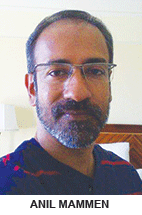Personalising children’s learning
 As adults, we have the choice to turn off a programme or turn the page if what we see or read makes no sense. However, we cannot afford to extend this liberty to children in schools — that they should walk out of classes which don’t make sense. Turning away from education is equivalent to shutting the doors on an informed present and future success. Therefore the only choice we have is to ensure children find meaning and purpose in what they learn in school.
As adults, we have the choice to turn off a programme or turn the page if what we see or read makes no sense. However, we cannot afford to extend this liberty to children in schools — that they should walk out of classes which don’t make sense. Turning away from education is equivalent to shutting the doors on an informed present and future success. Therefore the only choice we have is to ensure children find meaning and purpose in what they learn in school.
This cannot be achieved by promising a deferred reward — that education is required to succeed in life. Children the world over are unimpressed by this message of the hereafter — if you study, you’ll do well; if you don’t, you’ll be a failure. Learning has to make sense right now, right here. Moreover there’s more to learning than a tedious chore or a competitive sport in which some win, some lose. At the end of a school day, children should return home reflecting on what they’ve learned in class and its purpose. It’s a tragedy if children believe that schooling is a duty thrust upon them. To use contemporary student lingo, school should be a cool place to hang out — a purposive institution that makes students sharper, lends perspective and develops their problem-solving and life skills.
Given that every child is unique, teachers should resist the temptation to design instruction and lesson plans for the mythical average learner who doesn’t exist. Research has shown that even choice of vocabulary and contexts have an impact on how children respond to learning. For a child who seldom watches or plays cricket, a mathematical problem involving a cricket match remains a purely academic puzzle. On the other hand, if a child is acquainted with the game, it becomes an engrossing exercise.
It’s also well established that every child processes information differently. Depending on what she is familiar with, she imagines things in her own unique way. Children also express their understanding of lessons and issues differently. A child who has not mastered arithmetic will find algebra difficult. On the other hand, if teachers undertake remedial teaching for struggling children in a classroom, it could demotivate students who have learned to solve more complex problems.
It could be argued that high-performing students are outliers and that the majority of students in every class are in the middle. But what exactly is this middle? Moreover, how can we be sure that the ‘middle’ is uniform?
To address such complex issues teachers can derive important learnings from new technologies. Google suggests search options based on your personal search record. YouTube recommends videos to be watched based on those you’ve accessed in the past. Amazon recommends books of the genre you have browsed or bought before. Of course, users aren’t walled in by these recommendations. But they make our experience of using the worldwide web richer by narrowing our search areas with the freedom to disregard past history.
The 21st-century reality is that in the personalised world of revolutionary digital technologies, there are no averages or ‘middles’, but unique individuals who can learn by communicating and collaborating with each other. The important point to note is that although new technologies attempt to cater to the personal preferences and habits of individuals, they connect rather than isolate learners. They allow users to form alliances (people with similar interests or professions, traditionally called communities of practice) and access conversations of other alliances.
This is not to advocate that all teachers and classrooms cater to the individual learning preferences of every student. This is neither advisable nor practical because it’s impossible for teachers to mentor students individually in a 35-minute class. Having said that, we also cannot ignore individuality altogether. Acquiring a better understanding of each child is a good start. Here too, technology might be able to help, with IT-enabled systems capable of informing student preferences and aptitudes to teachers without interpretative biases. But unquestioning acceptance of the data and history a computer system generates, could lead to reductive profiles of students. Therefore, the judgement of teachers is vital.
Intelligent IT systems can identify gaps in students’ learning and enable them to fill deficits through self or assisted learning initiatives. Such initiatives can be enhanced by teachers and through peer-to-peer collaboration. In the final analysis, a computer is an impersonal object which can help identify learning deficiencies through intelligent algorithms. But real personalised learning requires the support, feedback and encouragement of teachers with better awareness of each student’s potential, learning deficit and unique capabilities.
(Anil Mammen is chief of learning design and social impact at Tata ClassEdge)
Also Read: New learning paradigms














Add comment